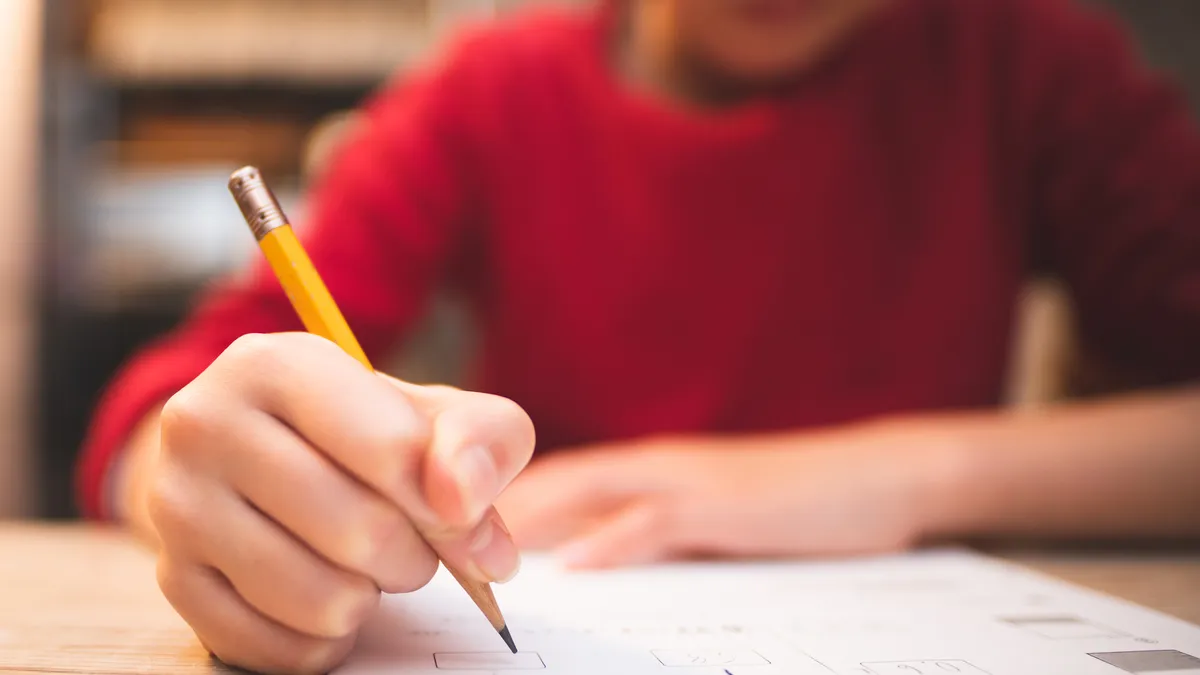U.S. 15-year-olds understand some common principles of money management and can make simple financial plans and solve “routine” problems related to budgeting, according to the latest results of an international financial literacy assessment.
But results of the 2018 Program for International Student Assessment in financial literacy — conducted in 20 countries — shows they’re not as skilled at interpreting complex documents, such as bank statements, or looking at the long-range consequences of financial decisions.
On a 1,000-point scale, the average score for U.S. students was 506, placing them behind their peers in Estonia, Finland, Canada and Poland, and in roughly the same range as 15-year-olds in Australia and Portugal. The Russian Federation, Spain, Italy and Brazil were among the countries scoring significantly lower than the U.S.
But Peggy Carr, the associate commissioner of the assessment division at the National Center for Education Statistics, which administers PISA and other international assessments in the U.S., called it "sobering" that 16% of the nation's 15-year-olds scored below level two on the assessment and "lack the basic financial literacy skills that they will need to make smart financial decisions" as they make the transition to adulthood.
American students’ performance also didn’t vary significantly since the first time the nation participated in the optional assessment in 2012 or from the second administration in 2015. In 2012, however, the U.S. scored below the average for other countries that are part of the Organization for Economic Cooperation and Development, while in 2018, U.S. students performed at the OECD average of 505.
"Certainly, by this third wave we hope to see more upward trending, particularly with a decrease in the percentage of students who are in levels one and two," said Katherine Sauer, vice president for research and programs at the National Endowment for Financial Education, a nonprofit. But she added that, given the students' age, scoring at level three isn't necessarily negative.
Carr said the assessment is important because many 15-year-olds are already consumers of financial products, such as debit cards and savings accounts, and some are earning money through babysitting or working in a family business. Young adults are also beginning to think about postsecondary options and how to pay for college, she added.
The assessment asks 15-year-olds, for example, to calculate whether purchasing a box of tomatoes or buying them loose is a better deal and to analyze the repayment terms for a loan.
The results show teens are more likely to acquire knowledge about financial matters outside of school than as part of a course. Thirty-eight percent of U.S. students responded in a survey that they learned about money issues from a specific class at school, while 52% said they picked up their knowledge through activities outside of school.
In Estonia, the top-performing country on the assessment, students were more likely to cover the topic at school as part of a course than in out-of-school settings — 53% compared to 41%.
Preparing for a ‘monetary fallout’
Advocates for incorporating more financial literacy instruction into curriculum say it prepares young people to confront real-world challenges, such as paying for college, maintaining a savings account and establishing good credit. But it can also increase self-confidence and foster other aspects of social-emotional development.
Some argue instilling teens with with basic financial principles is especially critical during a time when economic predictions are dire. “The monetary fallout of COVID-19 — business closures, job losses, declines in tax revenue — still is being determined,” a Richmond-Times Dispatch columnist recently wrote. “To recover, we need financial literacy more than ever.”
According to the Council for Economic Education’s 2020 Survey of the States, released in February, 21 states require high school students to take a personal finance course, an increase of five states since 2018, the last time the survey was released. Twenty-five states require students to take an economics course — three more than in 2018.
But the number of states requiring students to pass a test in either of those content areas in order to graduate has dropped.
Some districts have also instituted their own requirements, as Prince George’s County Public Schools in Maryland did last month at the urging of students. By 2024, students will have to pass a financial literacy course in order to graduate.
“The truth of the matter is we’re coming into a global recession, COVID-19 and everything that’s happening, and if you don’t know how to balance your checkbook, you’re going to be sorry,” Joshua Omolola, the student member of the PGCPS school board, said in a video.
Sauer called the crisis "the ultimate teachable moment" and said it will be interesting to see how the pandemic affects teens' financial knowledge across all the participating countries.
She added that "excellent curricula" have some common elements. They are taught by trained educators, include materials from unbiased sources, are presented to students when they can apply the principles and include topics relevant to students from different backgrounds.
Countries that performed better on the PISA assessment than the U.S. "have a national strategy for delivering financial education to their youth, and they get youth involved in the banking system at an earlier age," Sauer said, adding the emphasis on local control in the U.S. "presents unique challenges" and contributes to the gap between high- and low-performers.
The score gap between the highest and lowest performers was 266 points, slightly less than 280 in 2015, but still more than the gaps in other countries that took the assessment, according to the results.
Other key findings from the 2018 assessment include:
- Students scoring in the lowest 10% made the biggest improvement since 2015, from 346 to 371, which is a different pattern seen in other PISA subject areas and in the National Assessment of Educational Progress, in which scores for the highest-performing students continue to improve or remain flat while those for low-performers drop.
- Higher-poverty schools — where at least half of the students are eligible for free or reduced-price meals — scored below the U.S. average. But Carr noted her analysis shows 7% of students from low-income families scored at level five. "These data show that it is possible to better prepare students than we have for their financial future," she said.
Sauer added, however, that "very few low-income students are in schools that offer a personal financial education mandate."
- Twelve percent of U.S. students reached level five on the scale — a score of 625 or above. Finland had the highest proportion of students at that level, with 20%.
- White and Asian students scored above the U.S. average, while black and Hispanic students scored below the average.





















